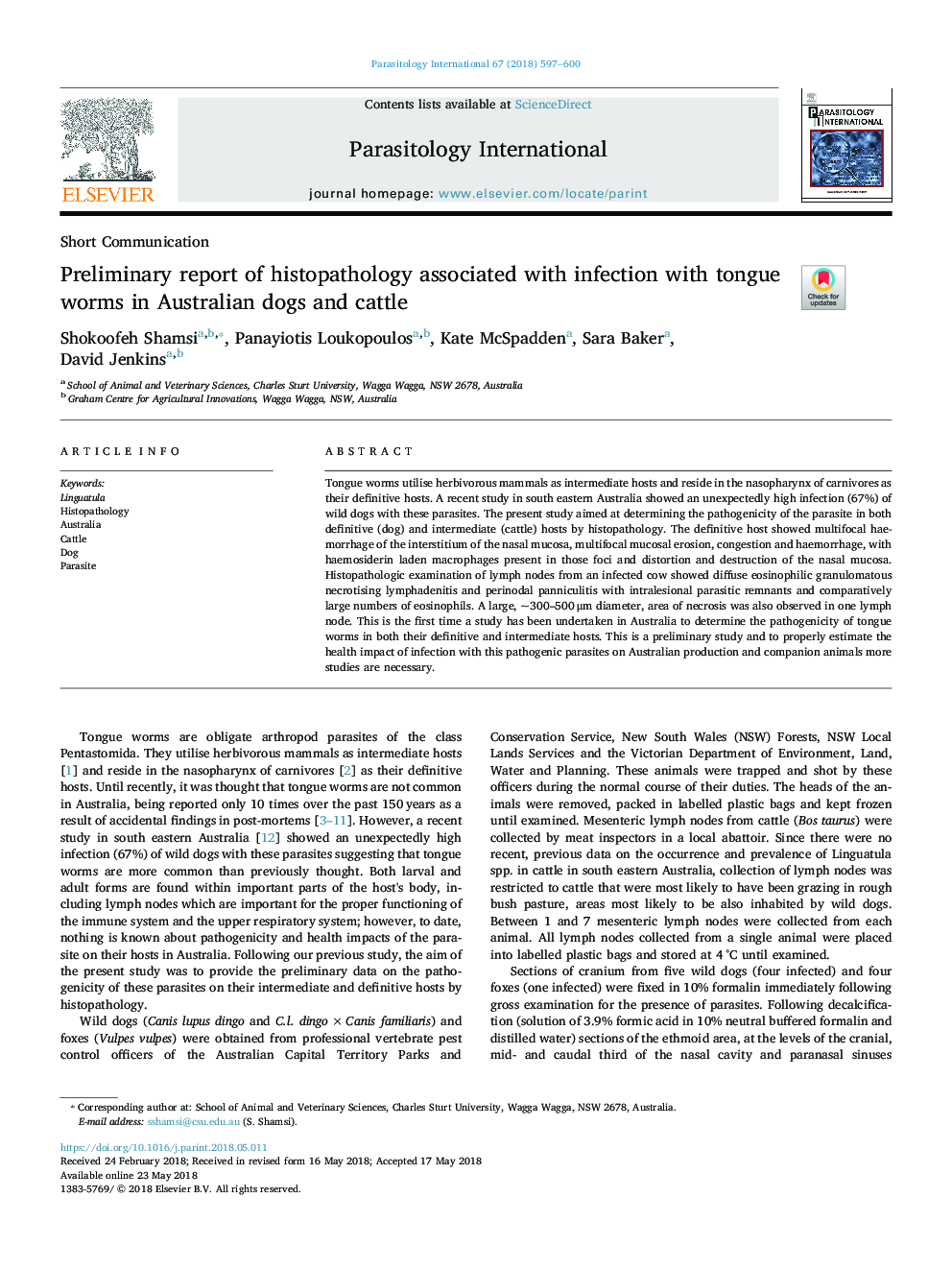| Article ID | Journal | Published Year | Pages | File Type |
|---|---|---|---|---|
| 8750492 | Parasitology International | 2018 | 4 Pages |
Abstract
Tongue worms utilise herbivorous mammals as intermediate hosts and reside in the nasopharynx of carnivores as their definitive hosts. A recent study in south eastern Australia showed an unexpectedly high infection (67%) of wild dogs with these parasites. The present study aimed at determining the pathogenicity of the parasite in both definitive (dog) and intermediate (cattle) hosts by histopathology. The definitive host showed multifocal haemorrhage of the interstitium of the nasal mucosa, multifocal mucosal erosion, congestion and haemorrhage, with haemosiderin laden macrophages present in those foci and distortion and destruction of the nasal mucosa. Histopathologic examination of lymph nodes from an infected cow showed diffuse eosinophilic granulomatous necrotising lymphadenitis and perinodal panniculitis with intralesional parasitic remnants and comparatively large numbers of eosinophils. A large, ~300-500â¯Î¼m diameter, area of necrosis was also observed in one lymph node. This is the first time a study has been undertaken in Australia to determine the pathogenicity of tongue worms in both their definitive and intermediate hosts. This is a preliminary study and to properly estimate the health impact of infection with this pathogenic parasites on Australian production and companion animals more studies are necessary.
Related Topics
Life Sciences
Immunology and Microbiology
Parasitology
Authors
Shokoofeh Shamsi, Panayiotis Loukopoulos, Kate McSpadden, Sara Baker, David Jenkins,
